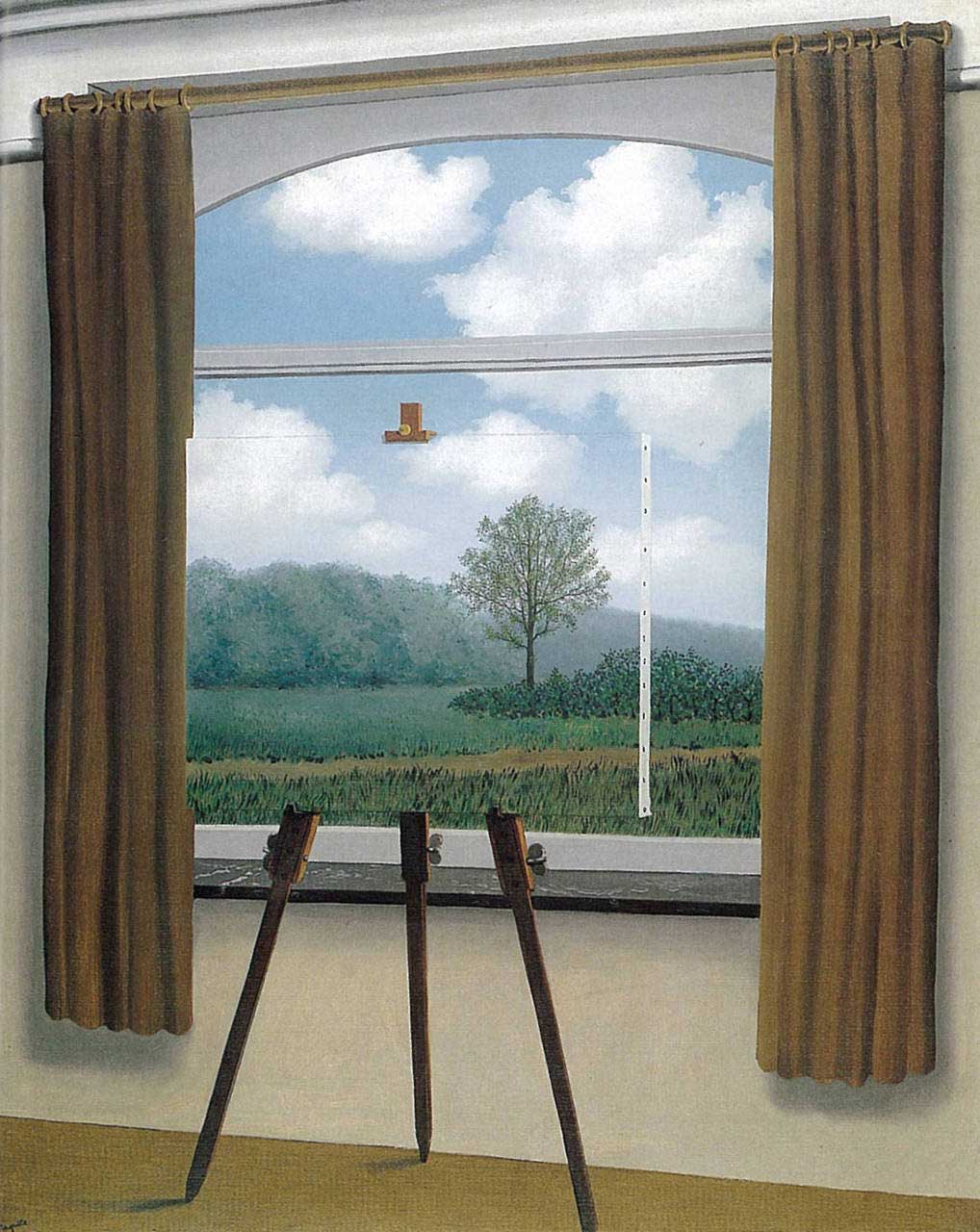"The map is not the territory" - Alfred Korzybski
The image on this page is that of a painting by Rene Magritte called 'The Human Condition'. It depicts a painting of an outdoor scene atop an easel. The easel stands in front of the window, through which the same outdoor scene can be viewed. One might imagine that an artist sat painting the view from his window and has left the canvas exactly where it was painted. At first glance, the painting and the outdoor scene look the same. Our artist has chosen to paint a faithful rendition of the view outside the window. The colours and hues are much the same, as are the weather conditions and the landscape.
I have shown this picture to many people as part of therapy and in the various trainings that I run. The painting on the easel and the view from the window are so similar that many of those to whom I show it cannot always tell what it is they are looking at. It takes some people a while to discern that the painting and the view are not the same. However, once people realise that painting and the view are separate, it begins to open up some very interesting perspectives on how they are different.
Why do I show people this picture? For me, it is a fantastic metaphor for the way our minds work. Specifically, it is a way to illustrate how difficult it can be for us separate our perception of the world from the world itself. As Anne Marie Berry once put it, "perception always intercedes between reality and ourselves". We find it hard to experience the world simply through our senses, without the constant stream of mind chatter giving us a commentary on what we are experiencing. For example, someone with low back pain, might experience their pain as a physical sensation, whilst simultaneously experiencing numerous thoughts about the pain, such as, "I can't do anything in this state", "I'll never recover", "This painful movement must be damaging my body", or "I have to be free of this". Since we struggle to see the difference between the view and the painting, the pain and the thoughts about pain can easily become fused, such that we place limitations upon ourselves in ways that are unhelpful and work against recovery or better coping. What if the story the mind is telling about the pain isn't true? What if doing what your mind is telling you to do will lead to negative consequences? Relying on our minds over our experience isn't always the most useful thing to do.
I believe that one of the most helpful things therapists can do for the people that come to them for help is to shed some light on this process of fusion, and help people to take a better look at their thoughts, rather than always looking from their thoughts. If we return to the painting metaphor, there are some distinct differences between the painting and the view. If we fixate on the painting, we will miss the view. The view may not be as the artist has depicted it. There might be things that the artist has been unwilling or unable to see. There might be a branch of McDonalds behind the painting that the artist has chosen not to paint. The view will constantly change - it will look different from different viewpoints or as the seasons progress, whereas the painting is much less dynamic. The painting is just a representation of the view and focussing all of our attention upon it means we believe the story that the painting is telling us, which may be innacurate, or unhelpful (particularly if you really fancy a burger). Learning to get some distance from our thoughts can be really helpful in enabling us to make better choices about what we do in life. Noticing our thoughts and the stories our minds tell us is an important ability, as is developing the realisation that we don't always have to believe what we notice and we don't have to do what the mind says. Think of the mind as an advisor that isn't necessarily right all the time. It's just representing the world as it sees it, but the representation isn't the same as the world itself. The painting is not the view. The map is not the territory.
